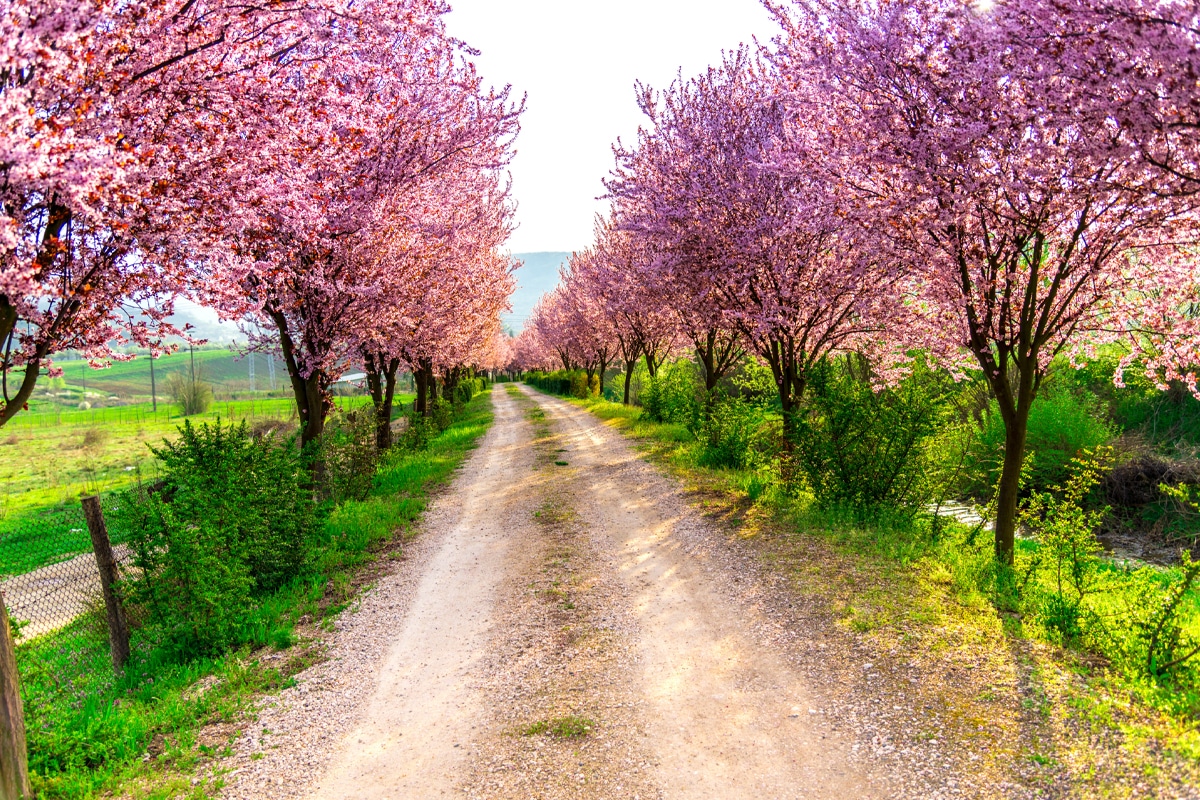Absolutely! Here’s a long article about flowering trees native to Ohio, restructured with `
` and `
` tags for better organization:
Ohio, with its diverse landscapes ranging from rolling hills to river valleys, provides a perfect habitat for a variety of beautiful flowering trees. These native species not only enhance the aesthetic appeal of the state but also play crucial roles in the ecosystem, providing food and shelter for wildlife. Let’s delve into the captivating world of Ohio’s native flowering trees.
Spring’s First Bloomers: Early Flowering Trees
Eastern Redbud (Cercis canadensis)
The Eastern Redbud is arguably one of the most beloved spring harbingers in Ohio. Its vibrant pink to purplish-red flowers, which bloom directly on the branches and even the trunk, create a stunning display against the backdrop of still-dormant woodlands. This understory tree thrives in partial shade and moist, well-drained soil. It’s an important source of nectar for early pollinators, including bees and butterflies.
Serviceberry (Amelanchier spp.)

Serviceberries, also known as shadbush or Juneberry, are a group of small, deciduous trees or large shrubs that produce delicate white flowers in early spring. These flowers are followed by edible berries that are relished by birds and humans alike. Serviceberries prefer sunny to partially shaded locations and well-drained, acidic soil. They’re a valuable food source for wildlife and add a touch of elegance to any landscape.
Flowering Dogwood (Cornus florida)
The Flowering Dogwood, with its distinctive white (or occasionally pink) bracts surrounding the true flowers, is a quintessential symbol of springtime in Ohio. While often thought of as petals, the showy parts are actually modified leaves called bracts. Dogwoods prefer partial shade and well-drained, acidic soil. They are vulnerable to dogwood anthracnose, so choosing disease-resistant varieties is recommended.
Wild Plum (Prunus americana)
Wild Plum trees burst forth in early spring with masses of fragrant white flowers. The fruits, which ripen in late summer, are edible and attract a variety of wildlife. These trees tolerate a range of soil types and prefer full sun to partial shade. They can form thickets and are excellent for wildlife habitat.
Mid-Spring to Early Summer: A Flourishing Palette
Downy Serviceberry (Amelanchier arborea)
Similar to the common serviceberry, the Downy Serviceberry is identifiable by its slightly larger size and the downy hairs on its young leaves and flower stalks. Its white flowers create a stunning display in mid-spring, and its berries are a valuable food source for birds. It also prefers sunny to partial shade.
Hawthorn (Crataegus spp.)

Hawthorns are a diverse group of small trees or shrubs characterized by their thorny branches and clusters of white or pink flowers. While their thorns can be a deterrent, their flowers provide nectar for pollinators, and their berries sustain wildlife. Many species of hawthorn exist throughout Ohio.
Black Locust (Robinia pseudoacacia)
Black Locust trees, though not universally loved due to their fast growth and potential to spread, produce fragrant, drooping clusters of white flowers in late spring. These flowers are a valuable source of nectar for bees, and the wood is highly durable. These trees grow in most soils, and like full sun.
Fringetree (Chionanthus virginicus)
Fringetree, is a small, deciduous tree or shrub, and is known for its delicate, white, fringe-like flowers that bloom in late spring. This tree prefers moist, well-drained, acidic soil and partial to full sun. The light scent of it’s flowers are also very enjoyable.
Late Spring and Summer: Lingering Blooms
Sourwood (Oxydendrum arboreum)
Sourwood trees, bloom later in the season. These trees display graceful, drooping clusters of white, bell-shaped flowers in mid to late summer. Its leaves also bring beautifull fall colours to the landscape. Sourwood prefers acidic, well-drained soil and partial to full sun.
American Linden (Tilia americana)
Also known as basswood, the American Linden is a large, deciduous tree with fragrant, yellowish-white flowers that bloom in early summer. These flowers are highly attractive to bees, producing a prized honey. It is a large tree needing significant room to grow.
Ecological Importance and Conservation
Native flowering trees play vital roles in Ohio’s ecosystems. They provide:
Pollinator Support: Their flowers offer nectar and pollen to bees, butterflies, and other pollinators.
Conservation efforts are crucial to protecting these valuable trees. Threats such as habitat loss, invasive species, and climate change can impact their populations. planting native trees, supporting conservation organizations, and practicing responsible land management are all essential for ensuring the continued presence of these flowering jewels in Ohio’s landscape.



